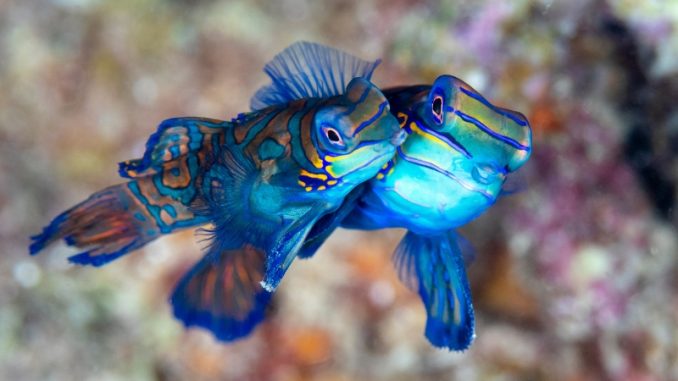
Do fish mate? This is a question many pet owners and fish enthusiasts often ask. Fish mating can be an intriguing process, but it’s important to understand the different types of mating that occur among various species of fish as well as any factors that could affect the success or failure of their pairing. With proper preparation and understanding, you may even have luck in witnessing your own aquarium’s fishes engaging in courtship behaviors. In this blog post, we will explore what goes into successful fish mating so read on to learn more about do fish mate.
Table of Contents:
Types of Fish Mating
Fish mating can be a fascinating process to observe, and there are several different types of fish that mate in various ways. Internal fertilization is the most common type of fish mating and involves the male transferring sperm into the female’s body cavity for fertilization. This method is used by many species including guppies, mollies, platys, swordtails, angelfish and more. The eggs will then develop inside the female until they are ready to hatch.
External fertilization occurs when males release their sperm into water near where females have released their eggs. Many species use this method including bettas, goldfish and koi carp. It’s important to note that external fertilization does not guarantee successful reproduction as it relies on chance encounters between males and females for successful breeding.
Different types of fish mating occur depending on the species, from internal fertilization to external fertilization and spawning habits. These factors all play a role in determining the success of successful reproduction. Next, let’s look at some other factors that can affect fish mating.
Factors Affecting Fish Mating
Temperature is one of the most important factors that can affect fish mating. Temperature affects a fish’s metabolism, hormones, and reproductive behavior. Generally speaking, warm water encourages spawning activity while cold water inhibits it. For example, some species such as guppies prefer temperatures between 75-80°F for successful breeding whereas other species like goldfish may require cooler temperatures around 65-70°F to spawn successfully. It is important to research the specific temperature requirements of your fish before attempting to breed them in order to ensure optimal conditions for success.
Water quality also plays an important role in successful fish mating. Poor water quality can lead to stress or illness which can inhibit spawning activity and reduce fertility rates in both males and females. To create an ideal environment for breeding you should test your tank regularly with a reliable testing kit and make sure all parameters are within acceptable levels according to the needs of your particular species of fish. Additionally, regular partial water changes will help keep ammonia levels low and provide fresh oxygenated water which will further encourage spawning activity among your fishes.
It is important to understand the various factors that can affect fish mating, such as temperature, water quality and food availability. By taking these into consideration, you can create a suitable environment for your fish to mate successfully. Now let’s look at how you can prepare the tank for successful mating.
Preparing for Fish Mating
Setting Up the Tank:
Before attempting to mate fish, it is important to make sure that their tank is properly set up. This includes making sure that the water temperature and pH levels are appropriate for the species of fish being kept. It also means ensuring that there is enough space in the tank for both adults and any fry (baby fish) produced from mating. Additionally, providing plenty of hiding places with rocks or plants can help create a more comfortable environment for breeding.
Choosing the Right Species:
When selecting which species of fish to breed, it’s important to consider their size and temperament as well as compatibility between males and females. For example, some larger species may require separate tanks while smaller ones may be able to coexist peacefully together in one aquarium. Researching different types of pet fish can help you determine which type would best suit your needs when it comes time for mating season.
Once you have chosen your desired species, introducing them into their new home should be done slowly over several days or weeks if possible. This will give them time to get used to each other before they start courting or spawning behavior begins. If possible, try adding just one male at first and then gradually add more males until all desired specimens are present in order to reduce aggression among them during this transition period.
Conclusion
In conclusion, do fish mate? Yes. Different types of fish have different mating habits and behaviors. Factors such as water temperature, seasonality, and the size of the tank can all affect a fish’s ability to successfully mate. If you are interested in breeding your pet fish, it is important to research their specific needs and prepare accordingly. With proper preparation and knowledge about your particular species of fish, you can help ensure that they will be able to find mates and reproduce successfully.
Do you have a pet fish and want to learn more about how they mate? Fishkeepingworld is here to provide the answers! Our comprehensive guide covers everything from understanding mating behaviors, identifying different species of fish, setting up an ideal environment for breeding, and finding compatible mates. With our help you can make sure your beloved aquatic friends are healthy and happy while learning all there is to know about their reproductive habits. Don’t wait – start exploring today with Fishkeepingworld!

Be the first to comment